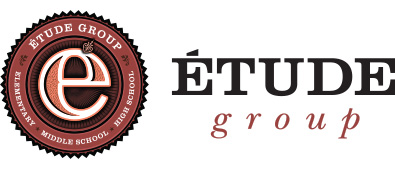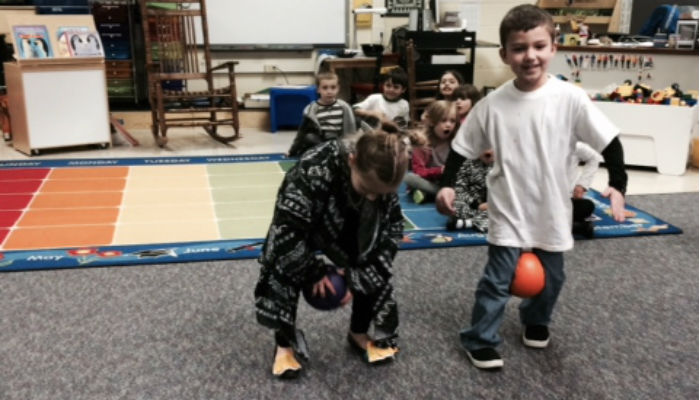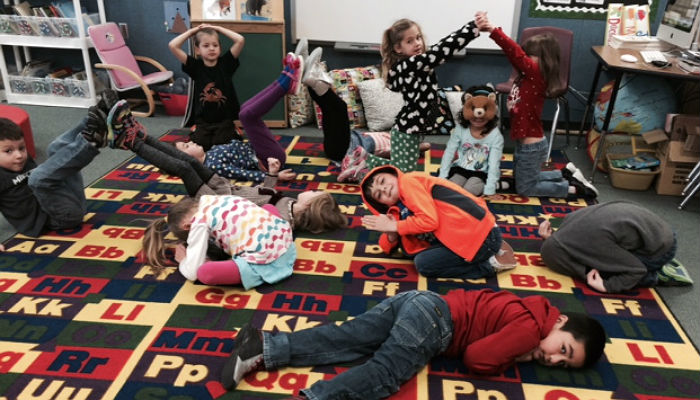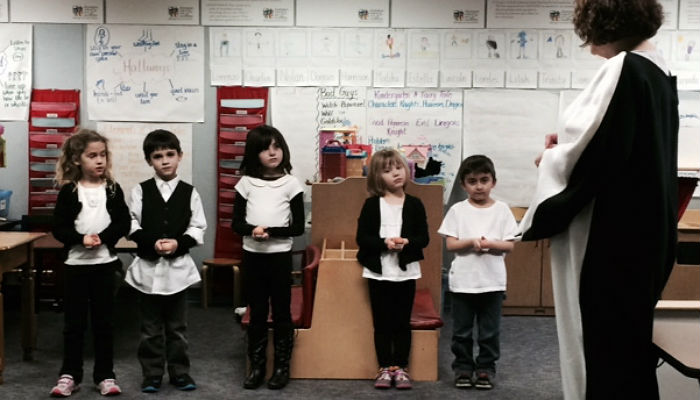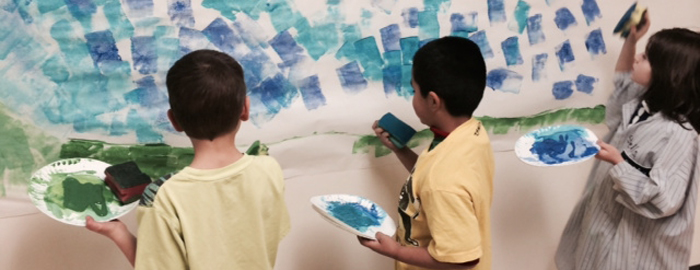
ESAA Kindergarten students have been immersed in the exploration of the natural habitats of polar animals this wintery season. In the beginning, students easily began to recognize traits and characteristics of animals such as polar bears, penguins, and sea lions, however as they dove deeper, students were asked the essential question, “What Do Animals Need?” This question allowed for a range of topics such as animal habitats, the Arctic and Antarctic regions, land formations, maps, globes, life cycles of mammals, pollution, and global warming. In asking what animals need, we are in extension creating the context for broader topic that can then implement reading, writing, critical thinking, and the arts.
What initially was a lesson on bears and their habitats, quickly became an exciting and explorative discussion of the world as they studied pictures of the globe, some perhaps for the first time. The polar regions were a critical topic to cover, though the Kindergarten teachers made sure to start with where we live in relation to the entire globe. The discussion continued to extend further and further outward in diameter from Wisconsin as questions were thrown out at rapid speed. It became a teaching opportunity for Ms. Hattabaugh as she quickly decided to take out a lamp to show how the light hits the globe and even peeled an orange to mimic the earths surface unraveled two-dimensionally on a map. These were fulfilling descriptions for the students that lead to a new broader knowledge and continued to bring a fresh excitement while encouraging questioning in the Kindergarten classroom throughout the weeks. Students demonstrated their learning by creating stories about polar bears, a class mural layering the different aspects of their habitat, and movement inspired by the Aurora Borealis. These projects are not the result of a single lesson, they are the beginning, middle and end of a process of learning that spans over a few weeks at a time.
The students gained an autonomy within their lessons by cultivating the flow of genuine curiosity into questions that could expand their knowledge base and make connections. They began to understand how humans can directly affect animals in these polar regions even though we do not live there. They learned that there are sensitive human actions that can affect how and where these animals survive. These ideas together gave them a broader sense of the cycle of life that they can already build off of from their earlier butterfly unit back in the first trimester where they discussed the cycle of larva, cocoon, to butterfly and over again.
They ended the unit on a happy note with a whole penguin day complete with costumes, food, and games. This is a unit that will surely stick with them in the years to come.
